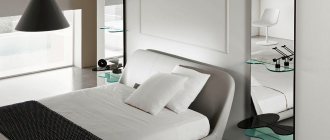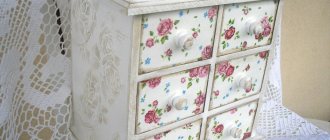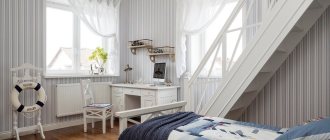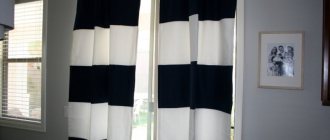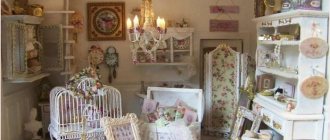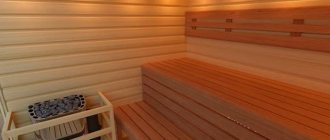Stalinist architecture
(
Stalin Empire
,
Stalin Neo-Renaissance
) also called socialist classicism is a style of architecture that established itself in the USSR from the 1930s and dominated Soviet architecture until 1955. The scope of Stalinist architecture is generally limited to urban public and residential buildings of good to average quality, with the exception of mass housing construction, and also includes isolated infrastructure projects. It is one of the markers of the Soviet Empire era.
History[edit]
Prerequisites for formation[edit]
Until the 1930s, Soviet architecture was dominated by the style of constructivism, which was distinguished by utilitarianism, solidity and some asceticism. However, since 1932, with the announcement of a competition for the best design of the Palace of the Soviets, the situation changed, and the style of constructivism no longer met the task of showing the victory of socialism. Not without the participation of I.V. Stalin formulated new principles of Soviet architecture: “Without prejudging a specific style, the Construction Council believes that the search should be directed towards using both new and better techniques of classical architecture, while at the same time relying on the achievements of modern architectural and construction technology.” In particular, this is how the style of post-constructivism
, which became a transition between constructivism and Stalin's empire style.
Development[edit]
From 1933 to 1936, the style of post-constructivism developed, which was transitional between constructivism and the Stalinist Empire style. Despite the fact that this style retained some features of constructivism, it was much more monumental. An example of the post-constructivist style is the building of the Frunze Military Academy, built in 1932-1937. In addition, some Moscow metro stations were built in the post-constructivist style. A special feature was that the architects sought to overcome the excessive asceticism of the constructivist era. Then, Soviet architecture finally switches to the Stalinist Empire style. Since 1935, when the master plan for the reconstruction of Moscow was adopted, architecture has become even more monumental. However, during the Great Patriotic War, construction was actually suspended. And the new development of Soviet architecture continues in the post-war years. In those same years, the Stalinist Empire style penetrated into Eastern Europe and China. One example of post-war Stalinist architecture is the seven Stalinist high-rise buildings in Moscow.
End of an era[edit]
In 1955, after Stalin’s death, a fight against “architectural excesses” was announced, the essence of which was to get rid of the signs of the former Stalinist Empire style and move to a new, more ascetic industrial construction, which actually became a repetition of constructivism.
Features of the color palette
The colors of the interiors of the first half of the 20th century are very modest, practically devoid of bright colors. The furniture chosen is predominantly dark, the walls are pastel shades, the carpets are red-brown, the doors between rooms are white, with multi-colored glazing.
The most suitable color combinations:
- linen with mahogany;
- agate gray with terracotta;
- marsh with woody orange;
- antique azure with beige-red;
- lavender with dark brass;
- pale gold with chocolate brown;
- bluish-green with beaver;
- protective blue with light chestnut;
- mustard with iron gray;
- emerald with brick;
- brown-orange with khaki;
- coral with cream;
- creamy yellow with violet-black;
- dandelion with opal green;
- ocher with silver-pink.
Features[edit]
Stalinist architecture assumed an integrated approach to development with planning of recreational areas, transport infrastructure, shops and consumer services based on socialist urban planning. That is, cities were rebuilt and built according to a general planning project. In addition, it included stylization for the Napoleonic era, late classicism or Empire style: yellow plaster on the external walls, white columns, white stucco with an abundance of Soviet symbols. Baroque elements were used in the decor. The interior involved the use of marble, decorations made of bronze laurel wreaths with Soviet symbols, and bronze lamps stylized as torches. After the Great Patriotic War, wooden partitions and ceilings were no longer used in the construction of buildings of Stalinist architecture. Another feature of the architecture was the lack of calculations for mass construction.
Apartment design in the Stalin Empire style
At the beginning of the 19th century, almost all apartments were designed in the Stalinist Empire style; everyone without exception wanted to have such an interior in their home. These were really nice apartments with good layouts and spacious rooms. The apartments located in Stalin's high-rise buildings had 4–5 large rooms. Such apartments had high windows designed in the form of a bay window.
The interior in the Stalinist Empire style when decorating the premises was distinguished by the use of such decorative elements as:
- stucco on the ceiling;
- laying parquet in the form of a herringbone;
- availability of sockets for chandeliers.
In apartments decorated according to this direction, a different type of parquet could be used to finish the floors in each room. Carpets were laid on the floors; preference was given to red-colored products, because they emphasized the richness and luxury of the interior.
Interior doors in Stalin's high-rise buildings were white, always with glazing. Often the glazing was made in the form of a mosaic.
The design in the Stalinist Empire style involved the use of expensive crystal chandeliers and sconces.
Examples[edit]
- Stalin's skyscrapers. The construction took a long time and with difficulty, and was completed after Stalin. Actually: From what was built: The building of Moscow State University.
- The building of the Ministry of Foreign Affairs.
- Hotel "Ukraine" Radisson Royal Hotel Moscow. It was already completed under Khrushchev. Due to the fact that in 1955 the decree “On the elimination of excesses in design and construction” was adopted, in the lower part of this hotel, according to a friend of the author of the edit, “looks like a large Khrushchev building.”
- Hotel "Leningradskaya". It was also completed under Khrushchev, and a year after the completion of construction, in 1955, two architects of this building were deprived of the title of Stalin Prize laureates, and one of them, in addition, was removed from the post of architect. Now, ironically, it is part of the hotel chain of American capitalists.
- Residential building on Kotelnicheskaya embankment.
- Residential building on Kudrinskaya Square.
- Administrative and residential building at the Krasnye Vorota metro station.
- Administrative building in Zaryadye. It was not completed due to the death of Stalin. However, a stylobate was made, on the basis of which the Rossiya Hotel was built.
center is like that. Well, not so high-rise, of course, but the overall impression... “This city looks like an abandoned stadium when crazy old people still come to it. They all think that a football match is about to start. And the pier here was made for giants. She looks as if ships were supposed to be approaching her all the time and giants were supposed to come ashore from them.”
Hotel “Ukraine”
The next high-rise is no longer a residential building, but a hotel. Its construction was completed in 1957. The house became the second tallest (34 floors, 206 meters). It is from here that Kutuzovsky Avenue, opened at the same time, in 1957, begins, around which one of the most prestigious districts of Moscow was subsequently formed. The name of the hotel was given by Khrushchev, who ordered the conversion of two side buildings into apartments, of which there were almost 250 in the end. Famous residents: director Sergei Gerasimov and writer Anatoly Rybakov. The entrances look very ordinary.
The hotel amazes with its luxury. In 2010, it was reconstructed and transferred under the management of the famous international company Radisson. Now its official name is “Radisson Royal, Moscow”. Luxury here is felt in every centimeter of space.
The ceiling is decorated with a plafond with a diameter of 10 meters called “Festival of Labor and Harvest in Hospitable Ukraine.”
The collection of works of art that has remained here since Soviet times is impressive: there are 1,200 paintings in it alone. For example, in the hotel you can see the famous diorama “Moscow - the capital of the USSR,” created for the New York exhibition in 1977.
The minimum cost of a night at the Radisson Royal is 8 thousand rubles, and the most expensive of the 497 rooms, the presidential suite with an area of 370 square meters, will cost almost 339 thousand
There would be no happiness...
In the first post-revolutionary years, against the backdrop of civil war, intervention, famine, devastation and terror, by and large, there was no time for stucco. In that situation, by and large, there was no talk not only about decorating buildings, but even about their construction. It was much more important to at least somehow restore, repair, reconstruct destroyed houses, businesses, and structures. The lack of highly qualified personnel, funds, and even basic building materials affected the situation. All that was needed was revolutionary enthusiasm, but you couldn’t put it on the facades instead of stucco. In architecture, or rather in construction, constructivism, rationalism, and functionalism completely dominated.
The situation changed dramatically by the early 30s of the twentieth century. The Soviet Union managed to achieve noticeable success in economic development and become one of the most powerful states in the world. Against the backdrop of intensive industrialization, the curtailment of the NEP, and the emergence of Stalin’s personality cult, the influence of power on all spheres of social life is sharply increasing.
A totalitarian state gives rise to totalitarian architecture. The government declares all innovative trends in architecture and art ideologically dangerous and imposes specific requirements on artists for their work. There is a complete return to traditionalism. Many consider this period to be a real crisis in Russian architecture.
Oddly enough, during this crisis, blessed times are coming for stucco decoration. The Soviet Union quickly and successfully acquired imperial ambitions, looked for ways to express its greatness and at the same time show how happy and joyful its citizens lived under the wise leadership of the Communist Party and Joseph Vissarionovich Stalin personally. Architecture played a significant role in solving this problem. As a result, the so-called Stalinist architecture appeared - a direction in architecture that implied the displacement of several architectural styles united by common features - classicism, monumentalism, empire style, eclecticism, art deco, etc.
What materials to use when decorating rooms
Finishing materials are used exclusively natural:
- stone – mainly granite, marble;
- wood - oak, pine, spruce, cherry, hornbeam, walnut, Karelian birch, etc.;
- metals - bronze, brass, steel, silver, etc.;
- crystal;
- ceramics;
- gypsum.
The floors are usually laid out with parquet, arranged in a herringbone pattern, but not common for the entire apartment, but for each room separately. The walls are decorated with stucco panels, half-columns, plaster brackets, caissons, corner details, textured niches, etc. The ceiling must have a stucco rosette for a chandelier, the same intricate ceiling cornices, and other similar decorations. The doors are made of wood, plywood, have panels, handles painted with gold paint, and platbands with 3D carvings. They match the color of the floor covering or are painted with white oil paint.
The floors in the bathroom and kitchen are laid out with ceramic tiles, less often - with natural stone, mainly red-brown colors, and the walls - with light tiles, richly decorated with plant patterns; a narrow contrasting border is allowed.
Selecting textiles for window decoration
Window draperies are chosen to be dense, heavy, creating a solemn atmosphere. They have several layers, a large number of folds, fringe, and tassels. In the bedroom, blackout curtains are preferred, protecting the sleeper from the morning sunlight; in the kitchen - shorter, lighter ones. Doorways are decorated with the same curtains as the windows and tied with golden cords. Fabrics are preferable to natural, plain, calm colors or sharply contrasting with the color of the walls. It is advisable that the curtains match the color of bedspreads, carpets, and other indoor textiles.
Stucco molding in the USSR: ups and downs
At all times, the development of architecture, as well as almost all other types of culture and art, depended on many different factors: first of all, economics, politics, and ideology.
And it should be recognized that this influence did not always have a positive result. Rather, it’s the other way around. Unfortunately, this conclusion is fully applicable to the history and fate of Russian architectural stucco decoration. Moreover, in the era of socialism, which overtook our country in 1917.
Over the last century, stucco has been disastrously unlucky several times and for various reasons. Although, it should be noted that during this period there were simply triumphant times for her.
Furniture selection
The furniture chosen is luxurious, high-quality, massive, mainly made of natural wood (oak, walnut, rosewood) and metal. It is often varnished and decorated with 3D carvings and mosaics. These are cabinets with carved “crowns”, convex sideboards, round or oval dining tables, leather chairs and sofas with high backs, heavy wooden chairs with turned legs, beds with balls or peaks in the corners. Wood carving is welcome here both in the form of complex plot bas-reliefs and simple “geometric” designs. Overlay slotted elements made of valuable wood are acceptable. In addition to natural or artificial leather, various fabrics are used as upholstery material - plain or with floral patterns.
